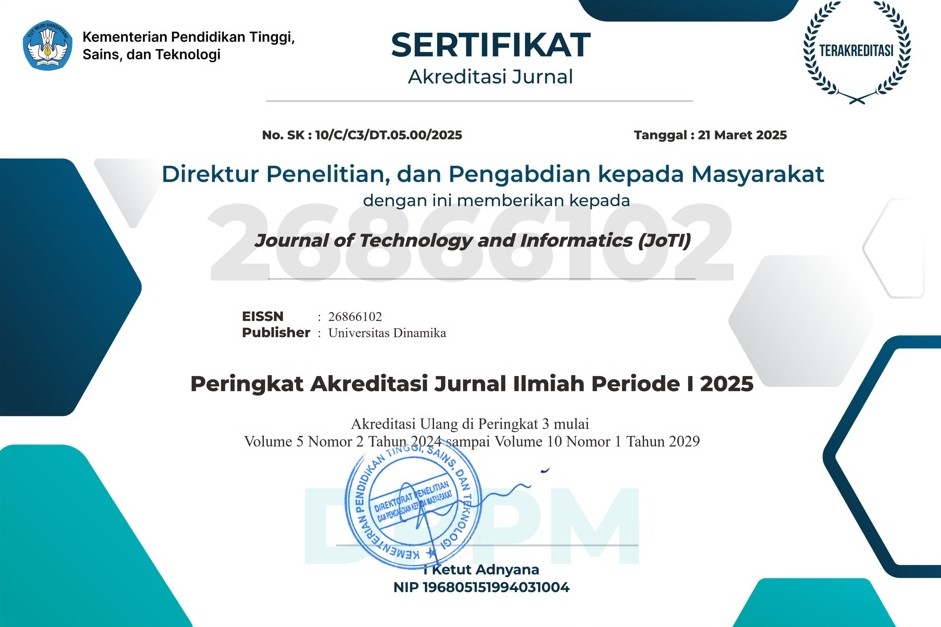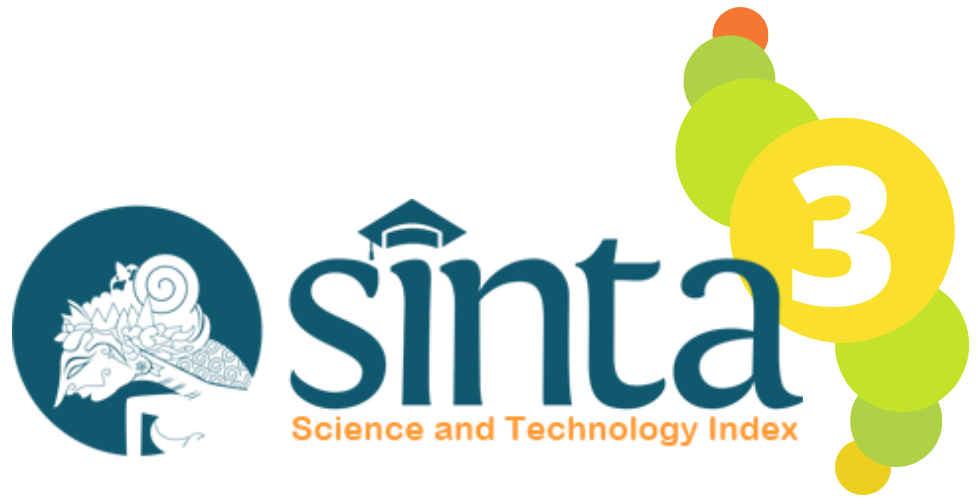Analisis Sentimen Pengguna X terhadap Perempuan di Lingkungan Kerja Menggunakan Algoritma Machine Learning
DOI:
https://doi.org/10.37802/joti.v7i2.1087Keywords:
Flask, Labeling, Naïve Bayes, Random Forest, Support Vector MachineAbstract
Gender bias against women in the workplace persists, including within digital interactions on social media. This study analyzes user sentiment on Platform X regarding women in professional contexts using three machine learning algorithms: Naïve Bayes, Support Vector Machine (SVM), and Random Forest. A total of 2,336 tweets were collected using 14 gender-related keywords and labeled both automatically using the DistilBERT model and manually through contextual interpretation. The automatic dataset was imbalanced (1,823 negative, 479 positive), while the manual dataset was more balanced (1,196 negative, 1,106 positive). After preprocessing and TF-IDF feature extraction, the data were split using the train_test_split method. Evaluation metrics included accuracy, precision, recall, and F1-score. Random Forest achieved the highest accuracy (79%) on automatic labels but showed class imbalance (F1-score: 0.88 for negative, 0.08 for positive). Meanwhile, models trained on manual labels showed more balanced performance with accuracy between 57% and 59%. A web application prototype was developed using Flask to predict sentiment related to workplace gender issues. The findings highlight the importance of balanced labeling and appropriate algorithm selection to build fair and reliable sentiment analysis models, contributing to more inclusive digital discourse on gender equality.
Downloads
References
Y. Afrillia, L. Rosnita, and D. Siska, “Analisis Sentimen Pengguna Twitter terhadap Isu Kesetaraan Gender dalam Penerapan Permendikbudristek Nomor 30 Tahun 2021 Menggunakan Textblob Analysis of Twitter User Sentiment Towards to Issue of Gender Equality in the Implementation of Permendikbudristek Number 30 of 2021 using Textblob,” Journal of Informatics and Computer Science, vol. 8, no. 2, 2022.
B. A. Yuniarossy, K. Maulida Hindrayani, and A. T. Damaliana, “Analisis Sentimen Terhadap Isu Feminisme di Twitter Menggunakan Model Convolutional Neural Network (CNN),” vol. 5, no. 1, 2024, doi: 10.46306/lb.v5i1.
A. Muzakir, K. Adi, and R. Kusumaningrum, Penerapan Konsep Machine Learning & Deep Learning. 2024.
A. Amri, “Implementasi Algoritma Random Forest untuk Mendeteksi Hate Speech dan Abusive Language pada Twitter Bahasa Indonesia,” 2020.
D. Shabira et al., “MIND (Multimedia Artificial Intelligent Networking Database Deteksi Seksisme Online menggunakan Support Vector Machine dan Naïve Bayes,” Journal MIND Journal | ISSN, vol. 8, no. 2, pp. 254–266, 2023, doi: 10.26760/mindjournal.v8i2.254-266.
M. Ilmar Rifaldi, Y. Raymond Ramadhan, and I. Jaelani, “Analisis Sentimen terhadap Aplikasi Chatgpt pada Twitter Menggunakan Algoritma Naïve Bayes,” 2023.
F. Alghifari and D. Juardi, “Fauzan Alghifari Penerapan Data Mining pada Penerapan Data Mining pada Penjualan Makanan dan Minuman Menggunakan Metode Algoritma Naïve Bayes,” 2021.
H. Al, F. ; Endang, and W. Pamungkas, “Pendeteksian Ujaran Seksisme pada Platform X dengan Algoritma Machine Learning Tradisional,” 2024.
B. Ramadhani and R. R. Suryono, “Komparasi Algoritma Naïve Bayes dan Logistic Regression untuk Analisis Sentimen Metaverse,” JURNAL MEDIA INFORMATIKA BUDIDARMA, vol. 8, no. 2, p. 714, Apr. 2024, doi: 10.30865/mib.v8i2.7458.
M. P. Firdaus, “Perbandingan Algoritma K-Nearest Neighbor (KNN) dan Naïve Bayes Classifier (NBC) dengan pelabelan Transformers serta Ektraksi Fitur TF-IDF dan N-Gram,” 2023.
S. S. Aljameel et al., “A sentiment analysis approach to predict an individual’s awareness of the precautionary procedures to prevent covid-19 outbreaks in Saudi Arabia,” Int J Environ Res Public Health, vol. 18, no. 1, pp. 1–12, Jan. 2021, doi: 10.3390/ijerph18010218.
T. H. J. Hidayat, Y. Ruldeviyani, A. R. Aditama, G. R. Madya, A. W. Nugraha, and M. W. Adisaputra, “Sentiment analysis of twitter data related to Rinca Island development using Doc2Vec and SVM and logistic regression as classifier,” in Procedia Computer Science, Elsevier B.V., 2021, pp. 660–667. doi: 10.1016/j.procs.2021.12.187.
S. Sohail and F. Amjad, “Investigation of Feminism Trends Through Sentiment Analysis Using Machine Learning and Natural Language Processing,” 2024.
I. Afdhal et al., “Penerapan Algoritma Random Forest untuk Analisis Sentimen Komentar di YouTube Tentang Islamofobia,” Jurnal Nasional Komputasi dan Teknologi Informasi, vol. 5, no. 1, 2022.
F. Andy Kusuma and E. Wahyu Pamungkas, “Pendeteksian Hate Speech pada Sosial Media Indonesia dengan Algoritma Support Vector Machine (Svm) dan Decision Tree,” 2022.
F. Novianti and K. R. N. Wardani, “Analisis Sentimen Masyarakat terhadap Data Tweet Traveloka Selama Rapid Test Antigen Menggunakan Algoritma Naïve Bayes,” JIPI (Jurnal Ilmiah Penelitian dan Pembelajaran Informatika), vol. 8, no. 3, pp. 922–933, Aug. 2023, doi: 10.29100/jipi.v8i3.3973.
P. Kumala Sari and R. Randy Suryono, “Komparasi Algoritma Support Vector Machine dan Random Forest untuk Analisis Sentimen Metaverse,” 2024.
A. Alabrah, “An Improved CCF Detector to Handle the Problem of Class Imbalance with Outlier Normalization Using IQR Method,” Sensors, vol. 23, no. 9, May 2023, doi: 10.3390/s23094406.
A. Ridwan, “Penerapan Algoritma Naïve Bayes untuk Klasifikasi Penyakit Diabetes Mellitus,” 2020.
J. Lemantara, “Penerapan Algoritma Naïve Bayes dan ID3 untuk Memprediksi Segmentasi Pelanggan pada Penjualan Mobil,” Journal of Technology and Informatics (JoTI), vol. 4, no. 1, pp. 31–40, Oct. 2022, doi: 10.37802/joti.v4i1.265.
H. S. W. Wafa, A. I. Hadiana, and F. R. Umbara, “Prediksi Penyakit Diabetes Menggunakan Algoritma Support Vector Machine (SVM) INFORMASI ARTIKEL ABSTRAK,” 2022. [Online]. Available: https://e-journal.unper.ac.id/index.php/informatics
J. Ipmawati, S. Saifulloh, and K. Kusnawi, “Analisis Sentimen Tempat Wisata Berdasarkan Ulasan pada Google Maps Menggunakan Algoritma Support Vector Machine,” MALCOM: Indonesian Journal of Machine Learning and Computer Science, vol. 4, no. 1, pp. 247–256, Jan. 2024, doi: 10.57152/malcom.v4i1.1066.
H. Santoso, R. A. Putri, and S. Sahbandi, “Deteksi Komentar Cyberbullying pada Media Sosial Instagram Menggunakan Algoritma Random Forest,” Jurnal Manajemen Informatika (JAMIKA), vol. 13, no. 1, pp. 62–72, Mar. 2023, doi: 10.34010/jamika.v13i1.9303.
G. Arther Sandag, “Prediksi Rating Aplikasi App Store Menggunakan Algoritma Random Forest Application Rating Prediction on App Store Using Random Forest Algorithm,” Cogito Smart Journal |, vol. 6, no. 2, 2020, [Online]. Available: https://www.kaggle.com/
R. Wirawan, “Analisa terhadap Tingkat Keaktifan Siswa pada Kegiatan Pembelajaran Sekolah dengan Metode Naïve Bayes,” 2022.
F. Dias Puspitasari and S. Anardani, “Aplikasi Klasifikasi Huruf Hijaiyah Menggunakan Algoritma Convolutional Neural Network dan Random Forest,” Seminar Nasional Teknologi Informasi dan Komunikasi, 2023.
Downloads
Issue
Section
License
Copyright (c) 2025 Journal of Technology and Informatics (JoTI)

This work is licensed under a Creative Commons Attribution-ShareAlike 4.0 International License.


















